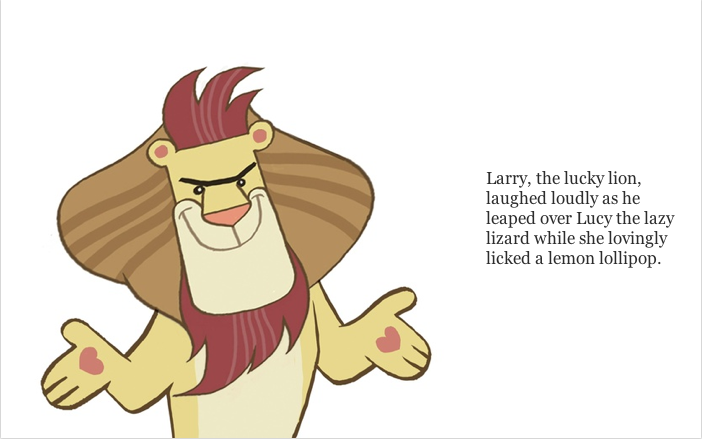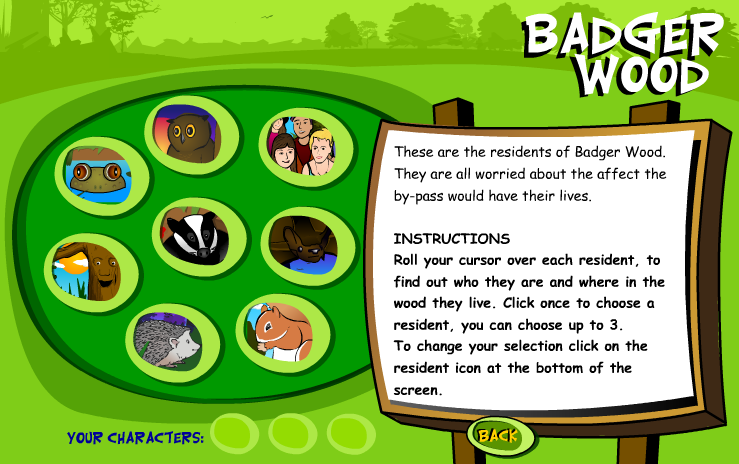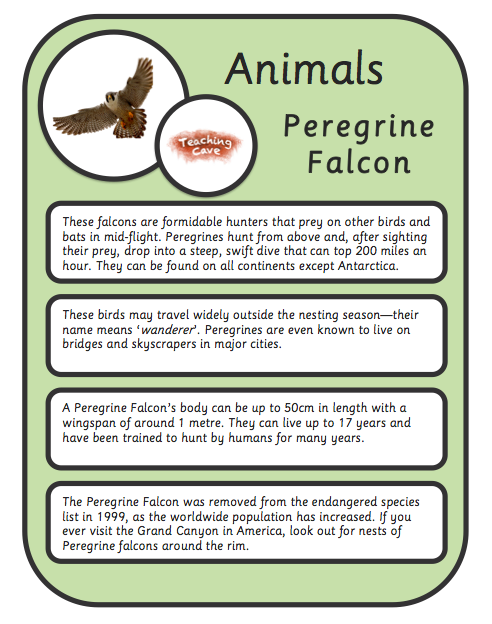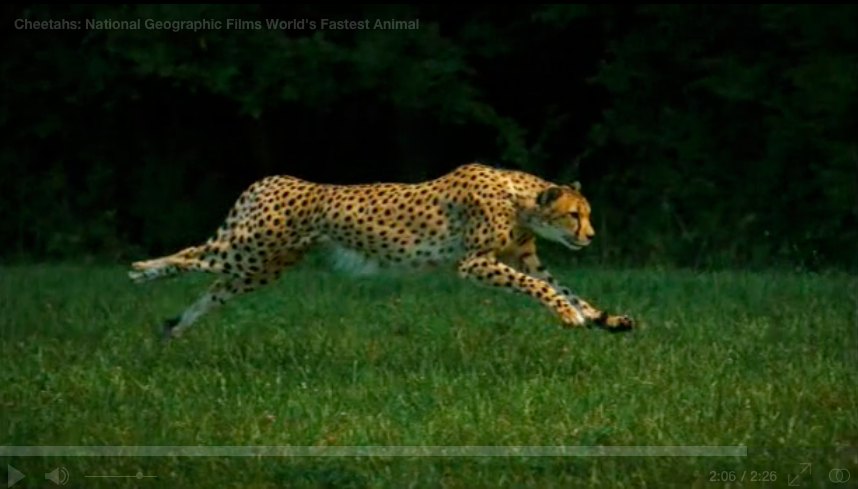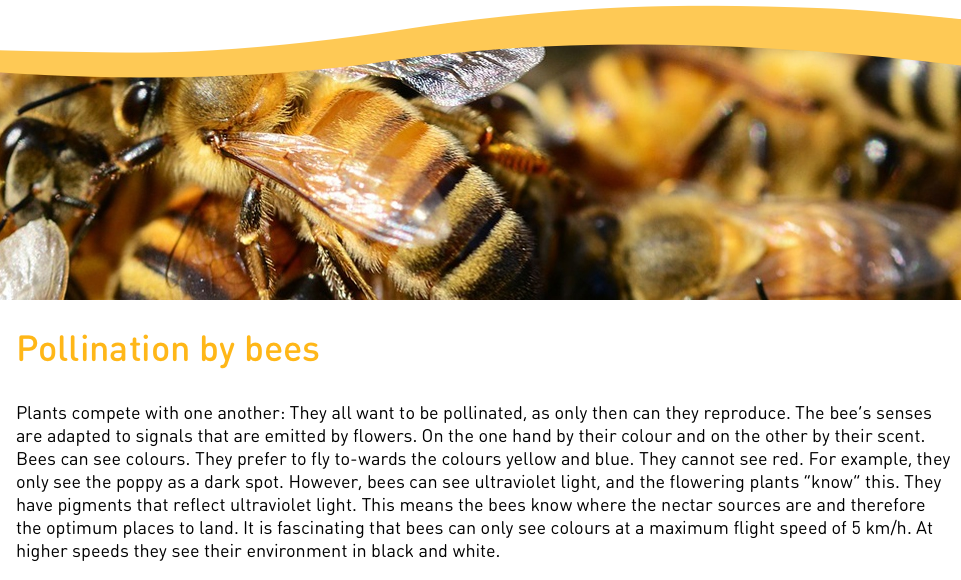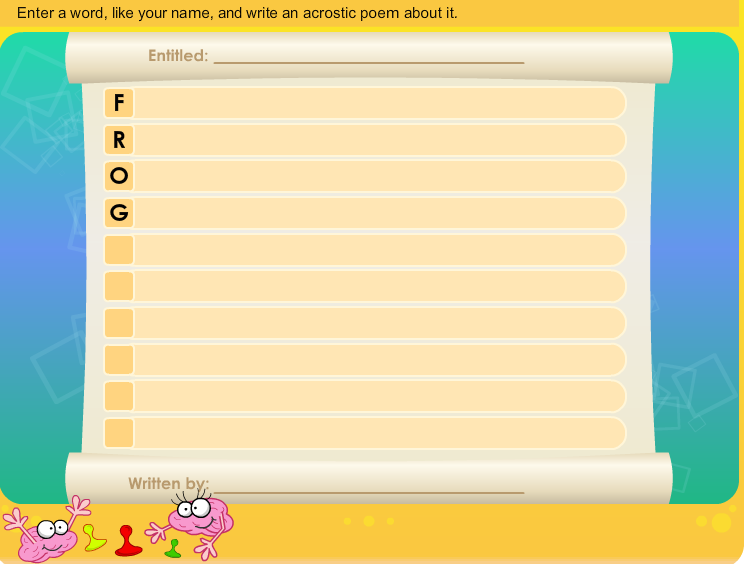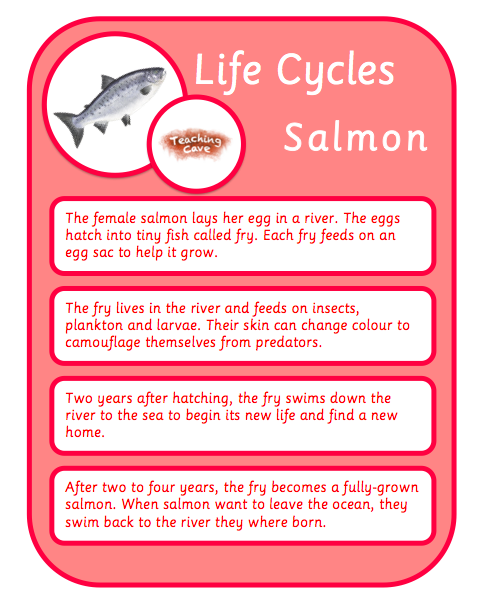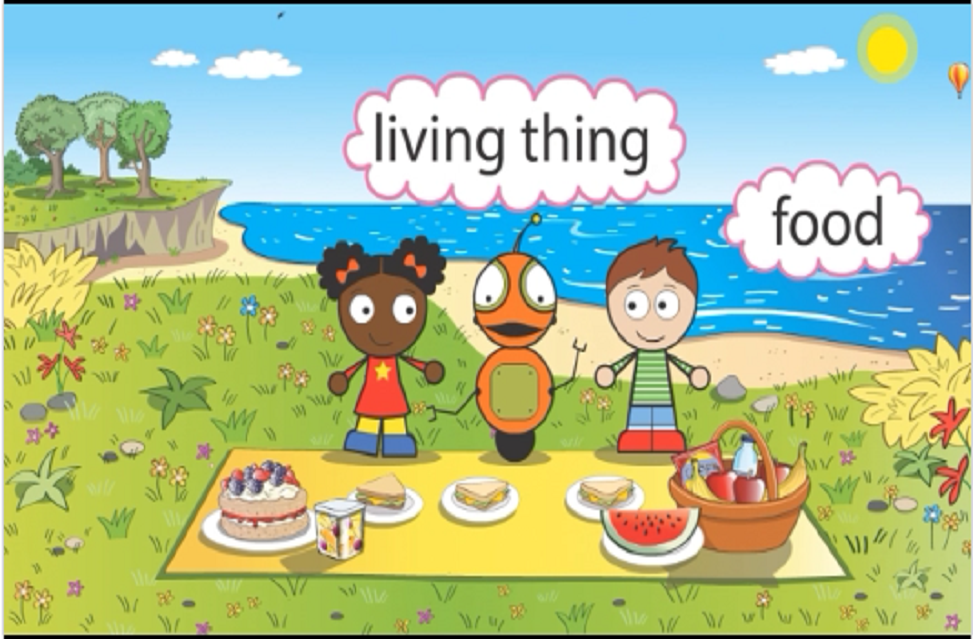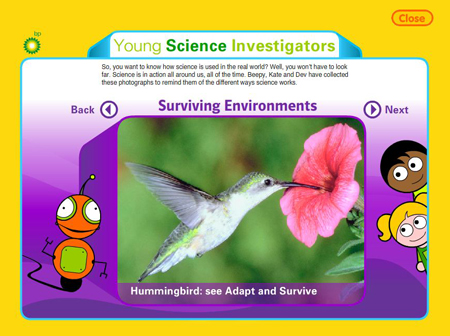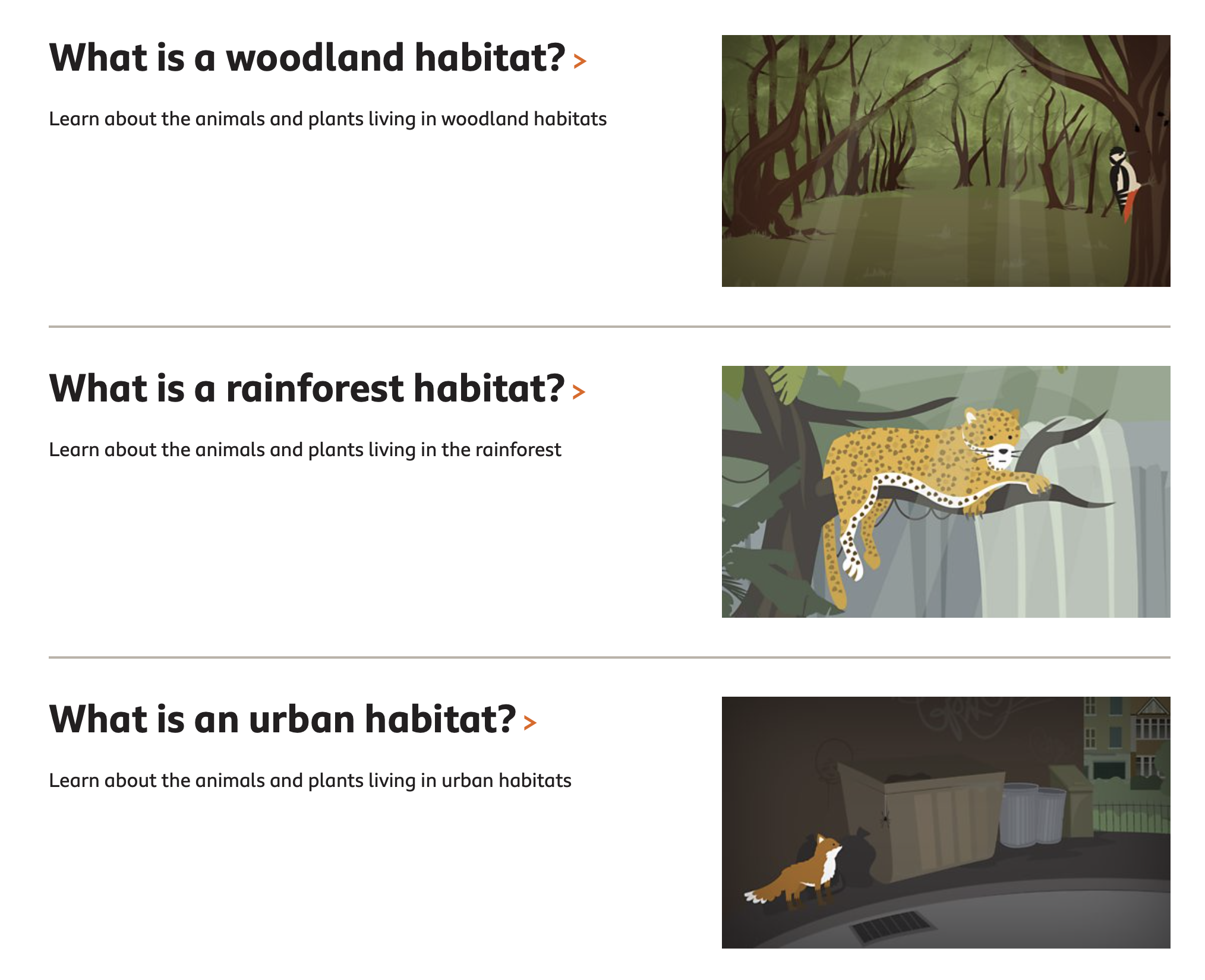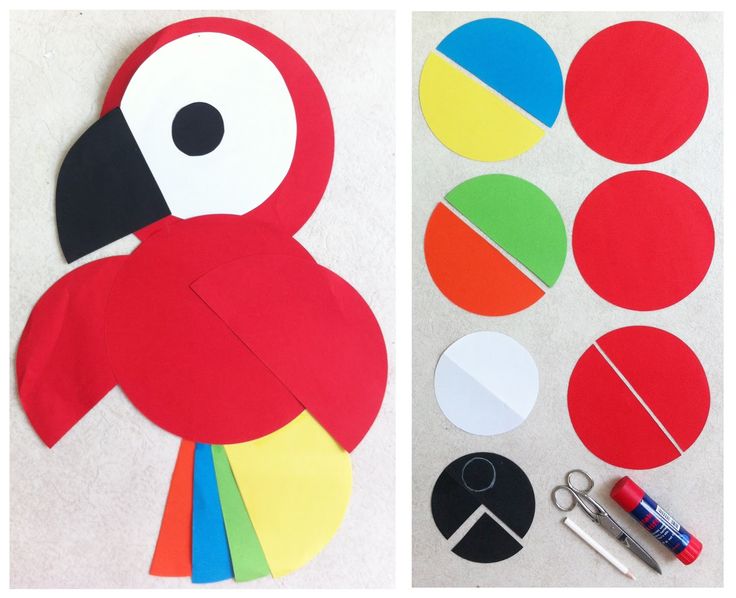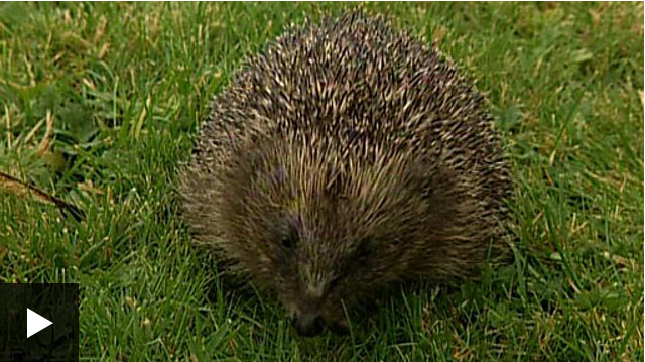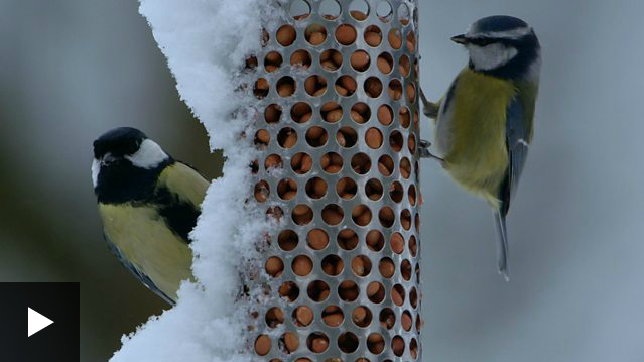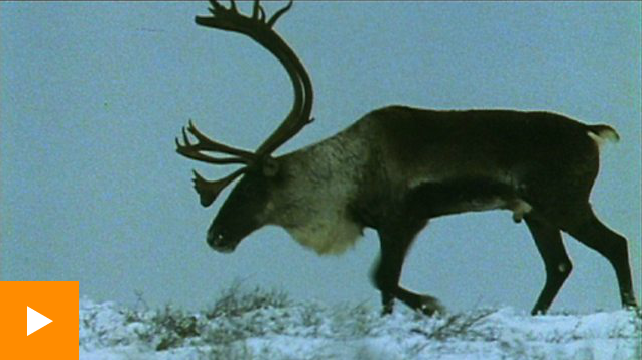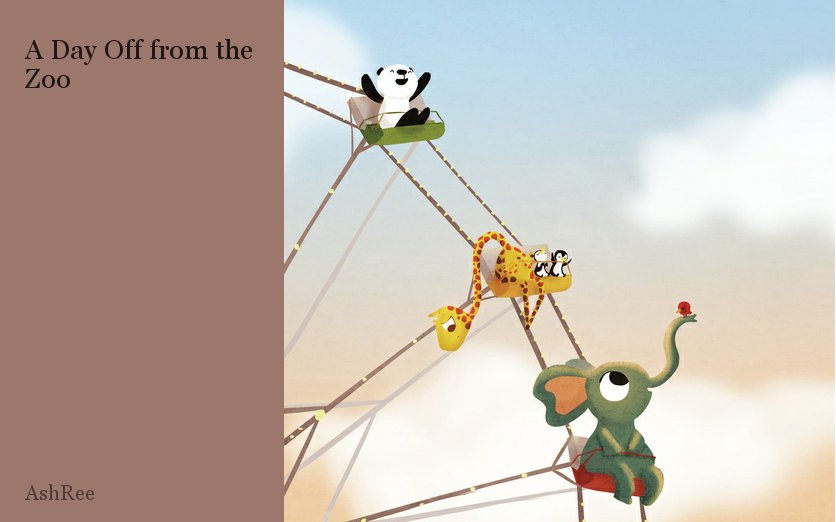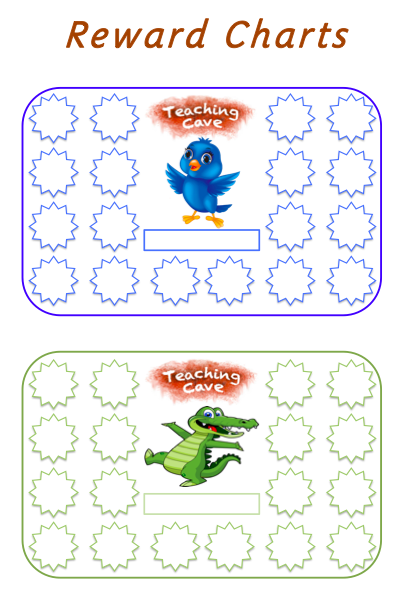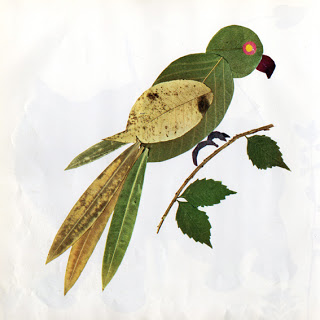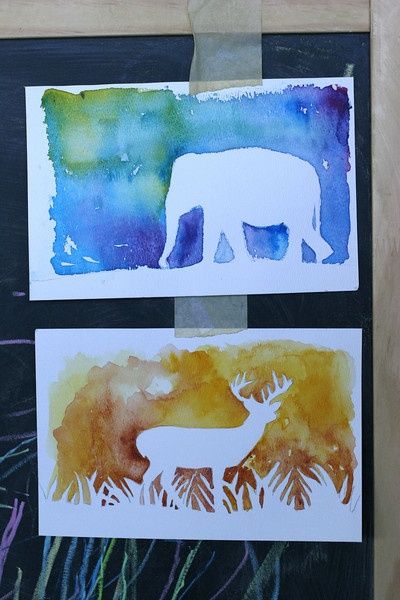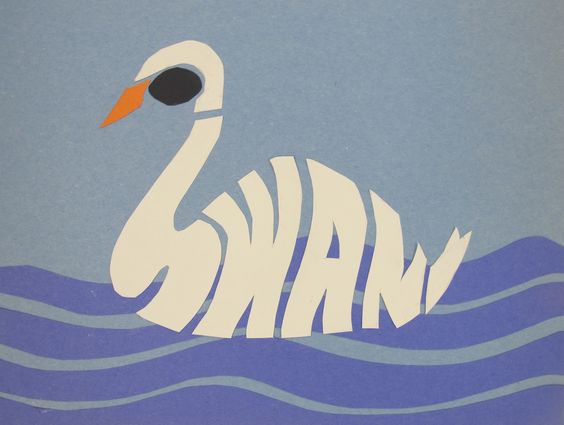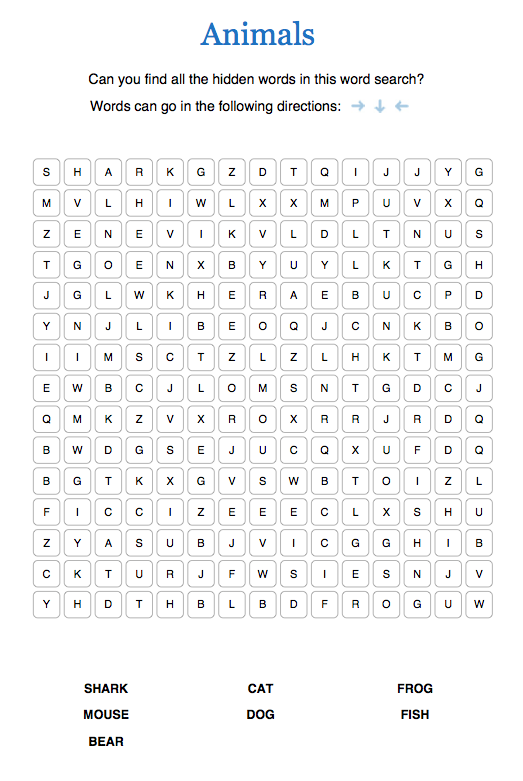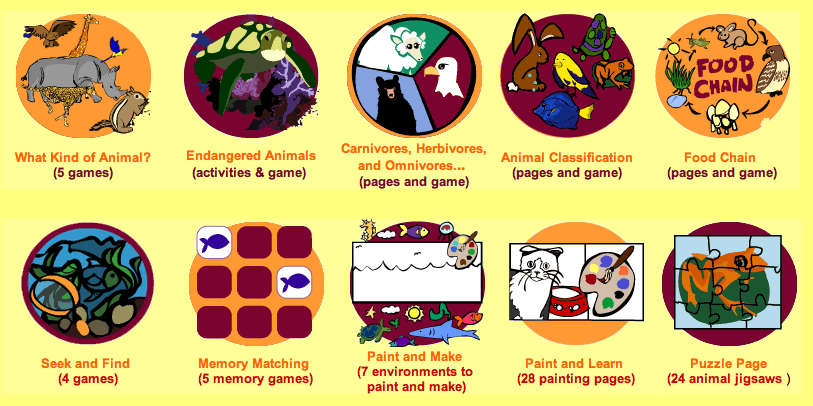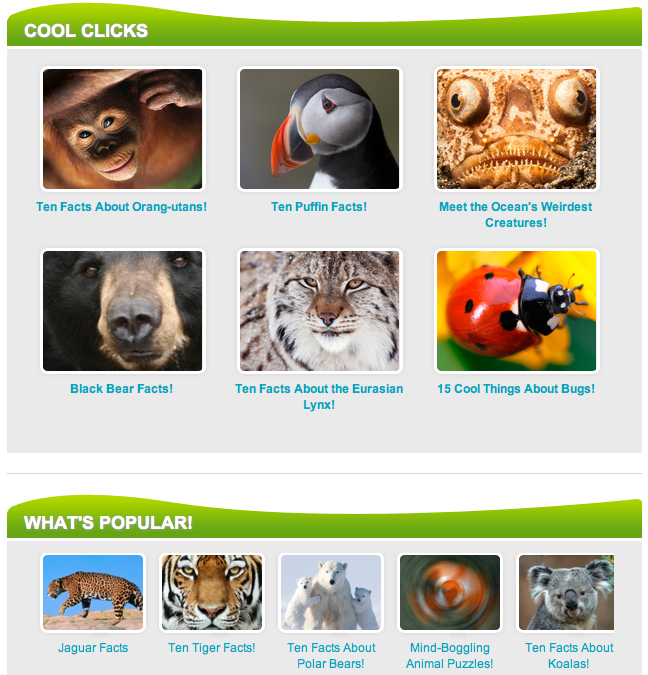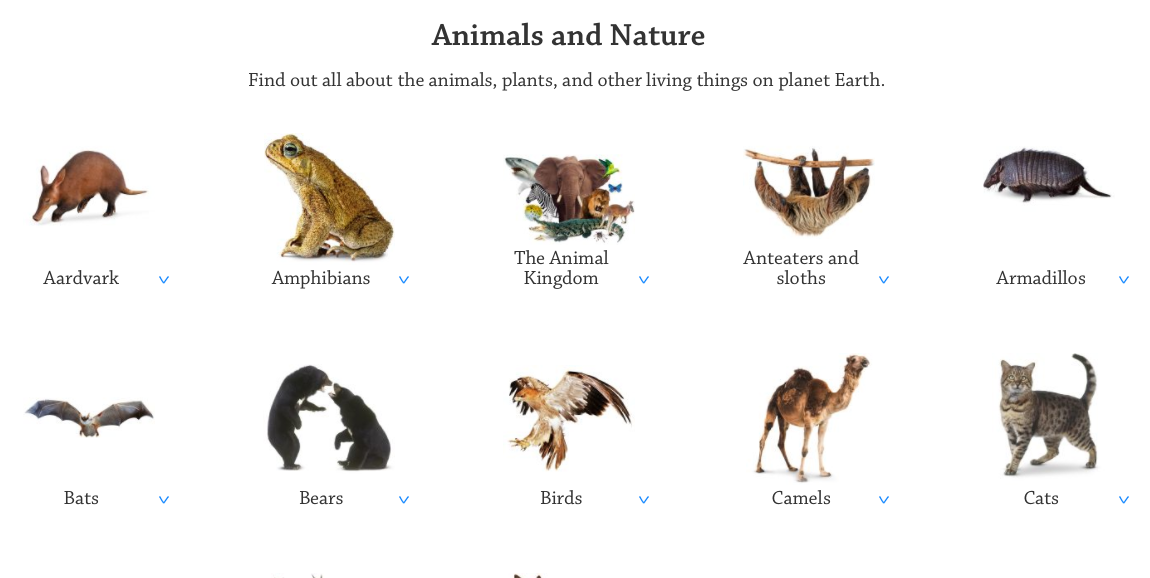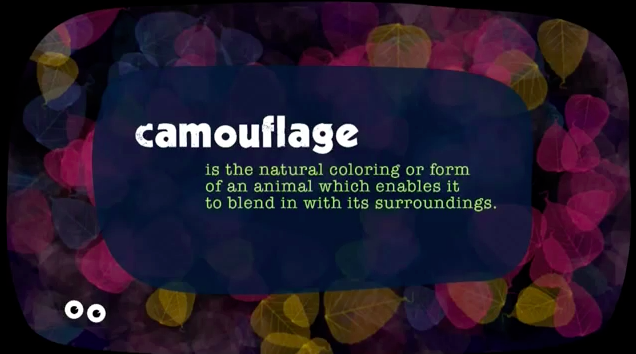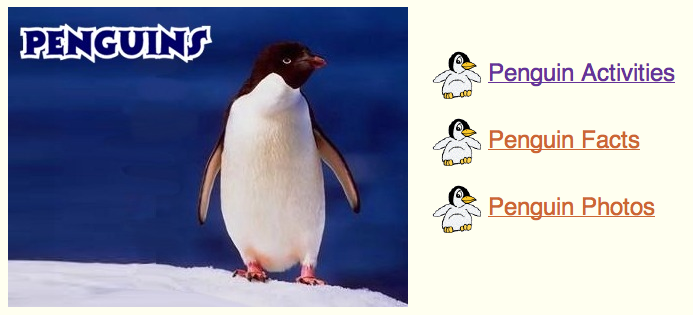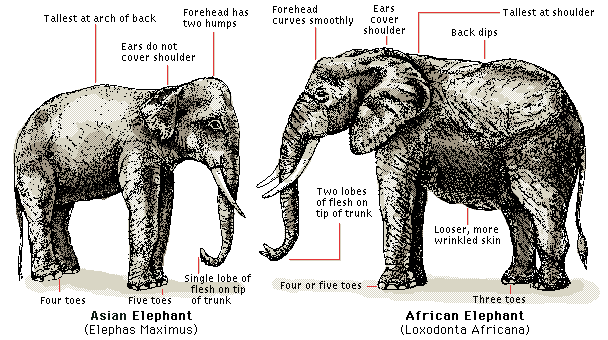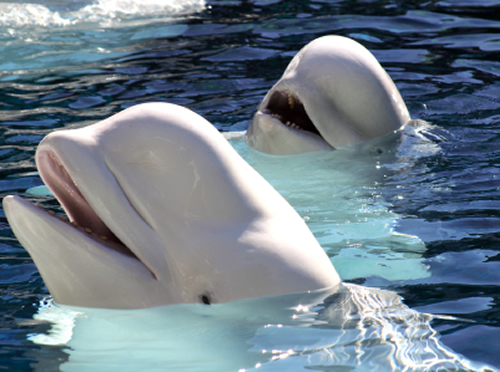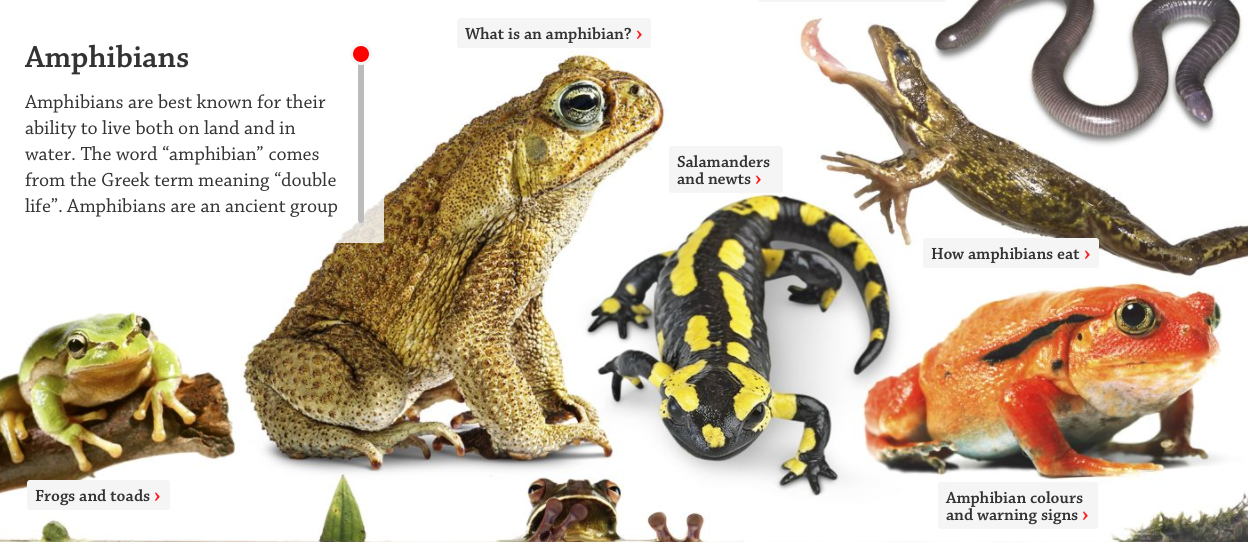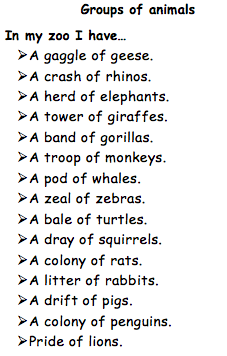Animals
Animal Alliteration
Amazingly Awesome Animal Alliteration
Brilliant verses to introduce your children to animals, poetic verse and alliteration.
Allow your children to create simple illustrations to accompany the verses.
Save our Wood
Your children can create a piece of writing to persuade the local council not to build through a forest.
Give your class a brief overview and inform them that local builders are looking to build houses, which will result in the forest being cut down.
Ask your class to create an argument and think of the reasons why the forest should not be cut down and the impact this would have. You can also set up a debate, reasons for and against.
Note: The interactive resource is no longer available.
Animal Information Fact Sheets
This is a useful resource when exploring different animals. The children can develop their reading for meaning skills and learn interesting facts about different kinds of animals.
This resource includes information about African Elephant, Blue Whale, Cheetah, Giraffe and the Peregrine Falcon.
Fastest Land Animal
Cheetahs are mainly found in Africa and Iran. There are less than 10,000 cheetahs left in the wild.
The cheetah can run faster than any other land animal. It reaches speeds up 60 miles per hour. The cheetah can reach its top speed in 3 seconds, which is faster than a Ferrari.
To find out more download our fact files or to watch a video clip of a cheetah running click the image.
Acrostic Poem Creator
Allow your children to create a fun acrostic poem using an animal of their choice.
Life Cycles
These are fact sheets that allow your class to learn more about the life cycles of different animals.
The fact sheets include some key vocabulary and terminology to develop the knowledge of your children. The fact sheets can be read independently or can be worked on as a group activity.
This resource provides information about frogs, penguins, salmon, kangaroos and butterflies. Click the image to start the download.
Living Things and their Habitats KS1
This resource is aimed at children aged 4-7 and explores living things and their habitats.
The video is a great resource and follows a presenter exploring rock pools and the beach to introduce the concepts of habitats and microhabitats. She considers the differences between things that are living, dead and that have never been alive.
There are also powerpoints, activity worksheets and animations to engage your children and develop their understanding.
Living Things and their Habitats KS1
This resource is aimed at KS1 children and explores living things and their habitats. It provides your class with slideshows, posters, experiments and vocabulary exercises.
This resource not only explores different environments and their benefits and drawbacks but also encourages your class to think about their actions and the impact on the environment. This provides a fantastic platform for class debates.
Habitats
Your KS1/KS2 class will explore the different type of habitats, features of each and animals which live in them.
Animals Artwork
This is a very simple, yet effective piece of artwork to brighten up your classroom.
For more art ideas visit:
Hedgehogs
This video clip highlights how hedgehogs live throughout the different seasons.
In spring, hedgehogs like to eat snails and slugs, and are able to find food due to their good sense of smell.
In the summer, the supply of food is plentiful with plants, fruits and berries all available.
In autumn, hedgehogs eat as much as they can to build up body fat for the winter.
In winter, hedgehogs fall into a deep sleep called hibernation.
Click the image to watch the video clip.
How the Seasons affect Animals
This is an interesting video clip to highlight how animals and plants cope during the harsh winter months.
We all have great fun in the winter snow building snowmen, sledging and throwing snow balls.
Winter for animals is not so much fun, as they must keep on searching for food. Children in schools often provide food for some animals during the winter, garden birds are given nuts, sheep are given straw but other animals must fend for themselves and their young.
Animals Around the World
This video clip shows a variety of animals from around the world and some of their habits.
The report includes clips of worms, elephants, squirrels, beavers, reindeer and bears. The report also highlights how crops and trees grow, using water and shedding their leaves in autumn.
Animal Stories
This is a must have resource for all the teacher who are exploring animals for their topic work. The resource has many animal stories to suit different abilities which helps your children to get more involved in reading and read independently, to develop their comprehension skills when reading for meaning, and learn new vocabulary and develop their word recognition skills.
Each story is well written and has illustrations to accompany the story.
Fish Numbers
This activity gives children the opportunity to recognise and develop their understanding of quantity.
The children will each receive a paper plate and colour it in blue. They will they create fish using card or tissue paper. Depending on the number you are working on, instruct the children how many fish they must include. When finished, all the fish bowls will make a fantastic display.
Reward Charts
Fully integrate your topic work into the rewards system and allow your children to choose a rewards chart linked to animals.
Leaf Animals
This is such a beautiful concept… bringing animals to life using nature.
The children will gather a range of leaves to create a piece of artwork. Ensure the leaves are different types, shapes, colours and sizes to get the most out of this activity. Autumn is always a great season to complete this activity.
Click the image to see more examples…
Animal Patterns
This is a very effective piece of artwork when looking at the different patterns of animals.
The children will research different animal patterns, select the colours and shades they need and paint a background pattern.
They can then use tracing paper to draw their chosen animal and stick it over the patterned background.
Silhouettes
These are beautiful silhouettes of animals that can be created by tracing round an animal of choice, cutting it out to make a template.
Once the template has been created, the children can add colours to a palette to create a background. Ensure the children don’t mix the colours thoroughly, as you want the colours to be definite in parts.
Once the colours have been mixed, placed the template on a white piece of card and then paint using a sponge. Remove the template and you have the image shown.
Note: To create grass, trees etc. you must create a new template.
The Swan
This is a beautiful piece of artwork created using paper and paints.
The background is easy to replicate but the swan takes a little bit more time.
Instruct your children to write the word ‘Swan’ in bubble writing in a similar way to the picture shown (wavy). Ensure the S is tall and resembles a neck. The letters W and A must be taller than the N. You can also make the N part of the tail by making it longer.
Once they have completed that, they must then create the curved head.
Animal Word Search
This is a super resource that allows you to create differentiated word searches for your children when learning about animals this term.
This word search is a great introduction to different animals you are learning about. You could also hide key words within the word search linked to your topic.
Assorted Animal Activities
This is a link to a variety of activities linked to animals. From simple jigsaws, memory games and interactive colouring activities, to advanced fact pages to more able learners seeking specific information.
Animals
Choose an animal, study pictures and learn interesting facts. A great resource to enable children to take ownership of their own learning, summarise information and learn new facts and information.
Animals and Nature
This resource provides children with an abundance of information on a variety of animals across the world. You will find a variety of images and interactive resources for your KS1 and KS2 children to learn as part of a group or independently. The pages are easily navigated and are child friendly.
Camouflage
This video resource is a fantastic introduction to how and why animals use camouflage. It is important to note that some animals use camouflage for different reasons and you should ask your class to think of animals and also think of the reason they need camouflage.
Penguins
Enjoy our fun penguin facts for kids. Learn about the Emperor Penguin, King Penguin, Crested Penguin, Little Blue Penguin, Chinstrap Penguin and more. Read on to find out what makes penguins unique members of the animal kingdom.
Elephants
It is estimated that there were once more than 350 species of elephants in the world. Today we only have two of them left – the Asian and the Africa species.
These video, image and text resources explore the difference between Asian and African elephants and are suitable for non-chronological reports for your Ks1 class.
Whales
Whales journey throughout all of the world’s oceans, communicating with complex and mysterious sounds. Their sheer size amazes us: the blue whale can reach lengths of more than 100 feet and weigh up to 200 tons—as much as 33 elephants.
Despite living in the water, whales breathe air. And like humans, they are warm-blooded mammals who nurse their young. A thick layer of fat called blubber insulates them from cold ocean waters.
Some whales are known as baleen whales including blue, right, bowhead, sei and gray whales. This refers to the fact that they have special bristle-like structures in their mouths (called baleen) that strains food from the water. Other whales, such as beluga or sperm whales, have teeth.
A great opportunity for your KS1 children to learn about non-chronological reports and whales. There are two types of whales (baleen and toothed) but many different species of whales for the children to learn about and research. The children love learning about whales and it captivates both boys and girls. To download the Powerpoint Click Here. To download the Whale fact sheets Click Here. To listen to whale calls Click Here. To learn more about whales from the WWF Click Here.
Amphibians
Amphibians are is a unique position in that they are able to live on both land and water. There are more than 7,000 species of amphibian in the world today. All amphibians begin their life in water with gills and tails. As they grow, they develop lungs and legs for their life on land.
Amphibians
Amphibians are cold-blooded, which means that they are the same temperature as the air or water around them. This resource explores a few simple points about amphibians.
Animal Groups
A list of animal groups.
- A gaggle of geese.
- A crash of rhinos.
- A herd of elephants.
- A tower of giraffes.
- A band of gorillas.
- A troop of monkeys.
- A pod of whales.
- A zeal of zebras.
- A bale of turtles.
- A dray of squirrels.
- A colony of rats.
- A litter of rabbits.
- A drift of pigs.
- A colony of penguins.
- Pride of lions.

